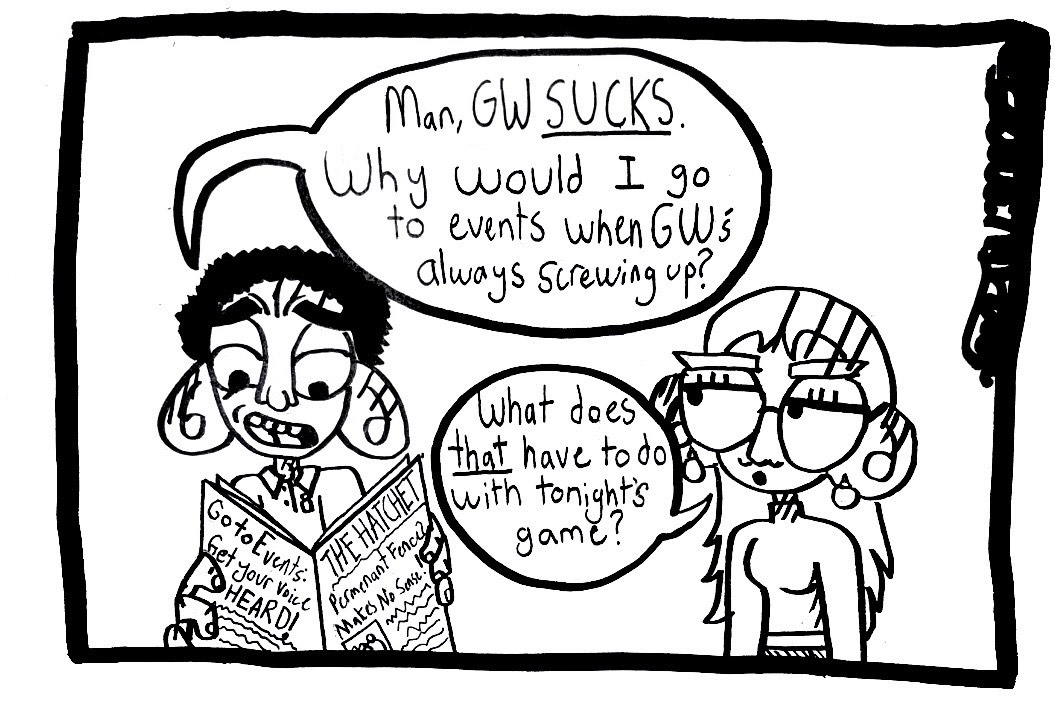At the close of the semester, The Hatchet’s editorial board gives GW a report card. When the University thrives, so do the people who live, work and study here. But it’s clear GW has had a rough semester.
Strategic plan
B
The 10-year strategic plan – the culmination of months of planning on the part of administrators, faculty and students – outlined goals such as making GW a more interdisciplinary school and bolstering research.
But the proposal to have prospective students apply to the University as a whole, rather than individual schools, drew ire from some, who said it could deter applicants who have specific career goals in mind when applying. The plan also says very little about the future of the social sciences and humanities at GW, which is unfortunate since the Columbian College of Arts and Sciences is the largest undergraduate college at the University.
Sexual assault policy
D
In its new sexual assault policy released in mid-September, the University created a 180-day window during which students could report sexual assaults. This amount of time is far less than the District’s statute of limitations of 10 to 15 years, which varies depending on the nature of the crime.
While it is admirable that the University is looking to make important information about sexual assault more accessible through the GW mobile app, the policy must be clearer: Yes, students can choose to remain anonymous when reporting a sexual assault, but no, it’s unlikely that students can get far into legal proceedings unless they divulge their identities.
Rebranding campaign
F
The University kickstarted the semester with the unveiling of a new logo – but it fell short of expectations.
The new face of GW, with its sans serif font and overtly militant-looking figurehead of George Washington, is not representative of a university that is trying to establish itself as a premier academic research institution. The flashy slogans featured on gwu.edu and plastered onto the walls of the Foggy Bottom Metro station do not capture the diverse interests of the student body. And while students at GW are certainly passionate, it might be a bit pretentious to suggest that every intelligent thought on campus can become “a stroke of the president’s pen.”
The University has also repeatedly declined to release the cost of the rebranding project and new logo, which looks like something that could’ve been created in a basic graphic design class.
And while the new logo was released earlier this semester, GW has done little to rally the community, other than holding an unveiling at the beginning of the semester and renting a mobile studio for individuals to share their GW stories. University of California schools released a new brand in November and launched a website to help community members buy into the process, outlining the system’s vision and thought process. GW, on the other hand, chose a new brand that demonstrates its struggle to define itself and stand out among a competitive crowd of universities, rather than clarifying its vision for the future.
Smoking ban
C
The University is looking to promote healthy lifestyle choices by prohibiting smoking within 25 feet of buildings and in public spaces on campus.
But it effectively makes it impossible to light up on campus unless you stand in the middle of the street. And given the amount of foot traffic GW sees every day from individuals unaffiliated with the University, it will be nearly impossible to enforce.
A student referendum in the spring found that 66 percent of voters supported a smoking ban – but less than 20 percent of the student body actually cast ballots in the first place. Those numbers are hardly a good indication of student sentiment. Besides, doesn’t the University Police Department have better things to do than write violations for on-campus smokers?
Audit report
Incomplete
You can’t expect to pass a course if you haven’t even handed in the final paper. Initially, the University made a transparent move by admitting to reporting incorrect data on the percentage of students who graduated in the top 10 percent of their high school class.
But then the scandal worsened when GW declined to release the audit of admissions data, saying that there were no records of the investigation because the Board of Trustees only received an oral report. There is no evidence to back up administrators’ claims that no other data contained errors, or that the misreporting was done “without malice.” The semester might be over, but GW still has some work to do.




